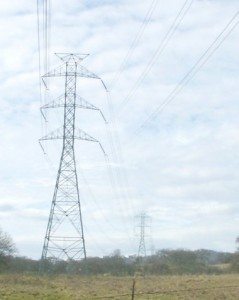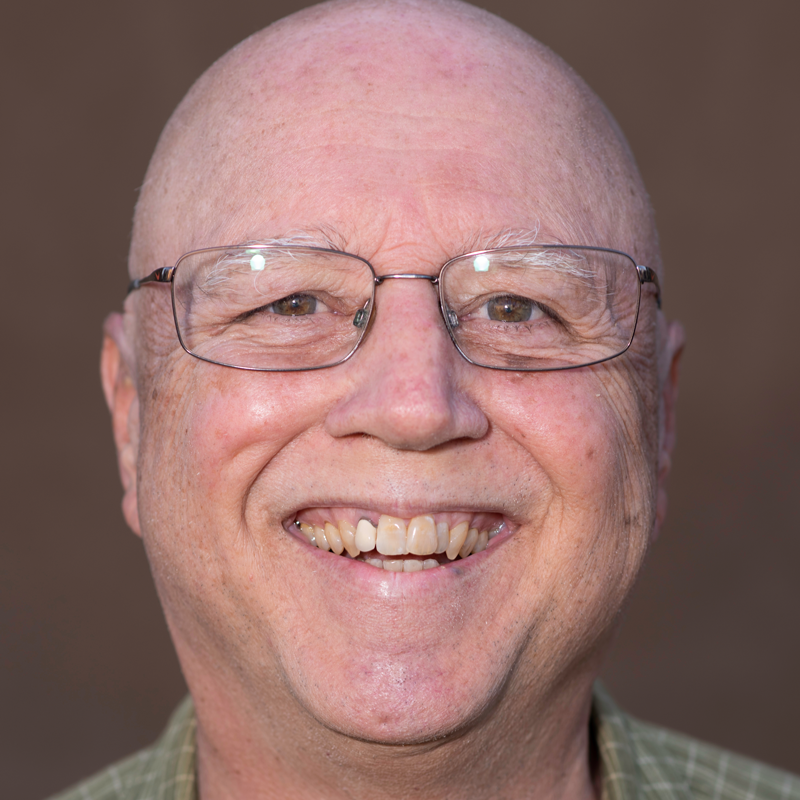
By Chip Ashley
In early 2008, a diverse collective of Sierra foothill people from Fresno, Tulare and Kern counties organized the Save the Foothills Coalition to oppose the building of a massive transmission line near their homes and property, a transmission line they believe will harm the beauty and ecology of the Sierra foothills.
The Community Alliance got involved in 2008 with the publication of a Vic Bedoian story, “Power Hungry,” in the September edition, based on Bedoian’s coverage of a community meeting at Squaw Valley organized by PG&E and Save the Foothills. At that time, we locals were pretty naïve about how PG&E does business. We have learned a lot since then.

This story is still about the Sierra foothills, covered with lupine and blazing with California poppies in the spring, places like Drum Valley in Tulare County and Squaw Valley and Watts Valley in Fresno County, where on a birdsong temperate day, with a little imagination, one can hear Yokuts women of pre-contact times singing as they sort their acorns in the shade of blue oaks. But this story is now about much more than just a local conflict. It is a story about how tiny quiet places like Watts Valley come in contact with one of the ugliest faces of capitalism.
The latest example showing that PG&E has far too much political and economic power came last October when a neighbor in Watts Valley called to complain that he had caught a PG&E contractor marking trees on his property with blue spray paint. The contractor explained the trees would be removed to prevent outages caused when trees grow into or fall into transmission lines.
These trees are located in the right of way of a 230-kilovolt transmission line known as the Helms-Gregg line because it connects the Helms Pumped Storage Plant at Wishon Reservoir in the High Sierra of eastern Fresno County with the Gregg Substation in southern Madera County a few miles north of Fresno. I notified other landowners with property affected by the Helms-Gregg, and they all counted numerous trees, mostly blue oaks (Quercus douglasii), marked with the blue death spot.
One lady said, “You said they’re marked with a blue dot? I can see one of those blue dots on a tree right out my kitchen window.”
As I surveyed the right of way with my brother, we could not help but think the plan to remove these trees is absurd. After all, the Helms-Gregg has been here for 26 years, and trees have not caused any reliability issues. Heretofore, PG&E trimmed trees to maintain clearances, according to California Public Utility Commission regulations (CPUC Order 95, Rule 35), which require a minimum 10-foot clearance for 230-kilovolt transmission lines.
According to PG&E’s Web site, fast-growing species require more trimming. But blue oaks are not fast growers. Indeed, adapted to our dry Mediterranean climate, blue oaks are very slow growers, taking on average about 100 years to reach a basal trunk diameter of 8 inches. So why the sudden change to a policy that would now require the removal of perhaps half of the trees in the right of way? It all made little sense, and we could explain it only as an absurd decision made by a bureaucrat in an organization that has become so large and powerful that it no longer applies simple common sense in its decision making.
One is forced to ask why a company that claims to be green would mandate the removal of what must amount to possibly millions of trees, which in a time of fear of climate change are a natural form of carbon sequestration. According to the company’s Web site, “At PG&E, we are committed to being an environmental leader and demonstrating this through our actions. We pledge to think creatively, work cooperatively and be results-oriented in our environmental stewardship efforts.” So why would the company have this absurd tree removal policy?

It is not easy to penetrate the PG&E bureaucracy to get answers. The company seems to purposefully insulate its bureaucracy from the public. However, after considerable research we were able to contact the local PG&E headquarters in Fresno, and the vegetation management representatives there knew nothing of the plans for tree removal. The PG&E vegetation management picture is complicated, which may explain some of the confusion at the Fresno office. The company contracts with several contractors who work in their vegetation management program; these include ACRT, Davey Tree and Asplundh.
After more research, Watts Valley neighbor Ron Dickerson, who after three years of in-depth study motivated by PG&E’s threat to build the C3ETP, knows a great deal about the PG&E corporate organization, was able to contact the head of PG&E’s vegetation management division, who agreed to come to Watts Valley to survey the transmission right of way and discuss our complaint. On a clear morning in early November, a number of angry locals met with the department head and two contractors representing California Reforestation, Inc. (Perhaps in light of their plans for our trees, they should more properly be called “California Deforestation.”) California Reforestation is working with the main headquarters of the vegetation program in San Luis Obispo, which probably explains why the Fresno office was unaware of the tree removal project.
The tension was palpable as we stood on the gravel entrance to the PG&E easement off of Watts Valley Road. The unctuous smiling of the two contractors did not mollify us. Six of us explained our concerns that the tree removal was mostly unnecessary. Blue oaks, we argued, are not fast growers even as saplings, and most of the marked trees are mature trees that will not grow much and therefore do not pose a serious reliability problem to the transmission line.
It should be pointed out that several of us locals possess expertise about our local flora and fauna, and one of us is a past president of the California Native Plant Society. Nevertheless, the department head and the contractors repeatedly dismissed our opinion that the trees are not a threat. Although one of the contractors stated that the tree removal was about grid reliability, she also attempted to play on our fear of wildfire, which could be caused by the conductors grounding out on trees.
We asked whether there was an environmental impact statement according to the CEQA (California Environmental Quality Act). “No,” she explained, “the project is CEQA exempt.” Dickerson requested copies of documents supporting the CEQA exemption. The department head said she wasn’t sure she was required to supply the documents, but that she would check on it.
We then opened the PG&E gate and drove along the transmission right of way to discuss some specific examples of marked trees. We spent more than an hour examining individual marked trees along more than a mile of right of way. As we looked at one beautiful old specimen uphill from the lines on the side of Goat Mountain—a tree with twisted old limbs that would make it a fitting subject for a Chinese landscape—one of the contractors opined that the tree had to be removed because it might fall and twist around such that its uphill limbs might hit the conductors. Listening to all this nonsense, I imagined the tree being uprooted and pirouetting like a leafy ballerina. This tree whose limbs were easily 20 feet from the conductors obviously posed no realistic threat.

The example made clear to me what was going on. PG&E’s motivation was to create a margin such that the threat would be reduced to zero. If the company extended its margin say 30% beyond what realistically would be close to a zero threat, the zero threat would be assured beyond even the most conservative doubt. The contractor’s motivation was to pad his job and ensure the largest possible payoff—the more trees cut, the bigger the check.
During her visit, the department head did not remove even one of the marked trees from the condemned list. Obviously, we locals left the meeting frustrated.
We contacted our political representatives, including Sen. Barbara Boxer’s office and Rep. Devin Nunes’ office. (Our diverse group includes Democrats, Independents and Republicans.) We have also contacted the California Department of Fish and Game. As a member of the Sierra Club, I have notified the local Tehipite Chapter, where I am on the executive committee, and the chapter is considering options.
During the weeks since our visit with PG&E vegetation management, we have learned a little more about how this unfortunate situation came about. According to a PG&E outage report, dated June 26, 2008, the “stalk of a century plant grew into the Contra Costa-Moraga 230 line,” causing an outage. NERC (North American Electrical Reliability Corporation) fined PG&E $100,000 for this outage.
NERC is a quasigovernmental organization made up of industry experts and engineers that establishes and enforces electrical reliability standards. The Federal Energy Regulatory Commission (FERC) bases its rules on NERC and WECC (Western Electricity Coordinating Council) recommendations. (I know, you’re drowning in the alphabet soup—me too.) NERC fined PG&E based on FERC Rule FAC-003-1, which requires transmission owners (TOs), like PG&E, to maintain a “transmission vegetation management program” (TVMP). The rule does not contain any specific clearance measurements, but substantial fines can be levied against TOs if NERC determines they have not kept up their TVMP. Without specific clearances for specific species, this is a rule that frankly begs for abuse.
So it appears that the rapid growth of a century plant, which can be as much as 20 feet in a few weeks when it puts out its flower stalk, has already caused the destruction of thousands of oak trees, which grow only inches in decades. It promises also to cause the destruction of many, many more trees, hundreds if not thousands in Watts Valley alone. This is an example of what can happen when corporate and government bureaucracies put their heads together to solve problems. You often get a one size fits all “solution.” It is only my opinion, but it seems to me vegetation management decisions must be based on local conditions and certainly not on treating century plants and blue oaks as if they are the same.
Complaints such as ours have been erupting all over the country. At this time, Rule FAC-003-1 is under review at the FERC, but oddly tree cutting by transmission owners has not been suspended. We recently received e-mail from the vegetation management head who visited Watts Valley in November. She has still not supplied documentation proving PG&E’s TVMP is CEQA exempt. However, she says PG&E’s TVMP is now under internal review and the tree removal in our area is on hold. We aren’t sure what this means, but we are thankful that we have bought ourselves and our friends the blue oaks some more time.
Chip Ashley is an independent environmental and political activist. Contact him at wattsvalleypreservation@gmail.com or 559-855-6376.

